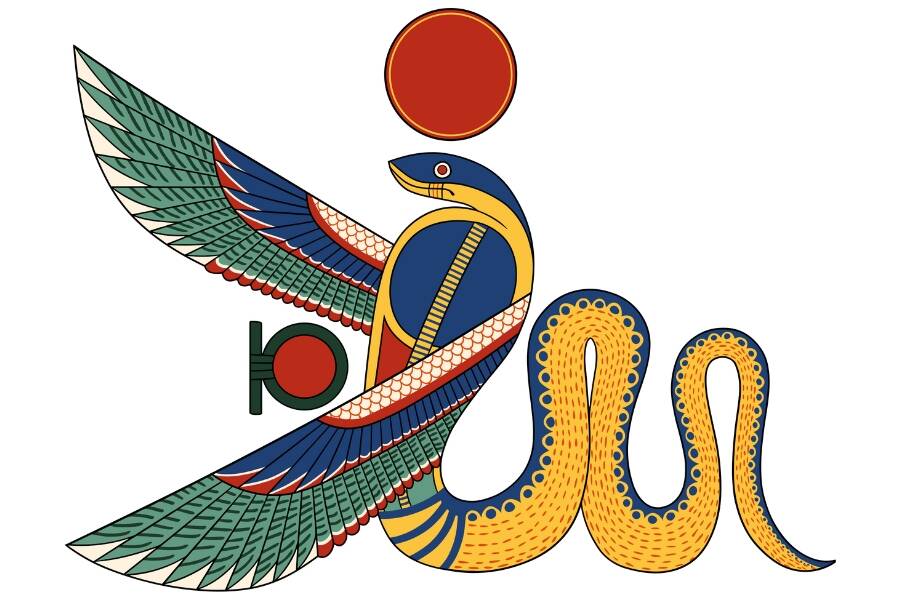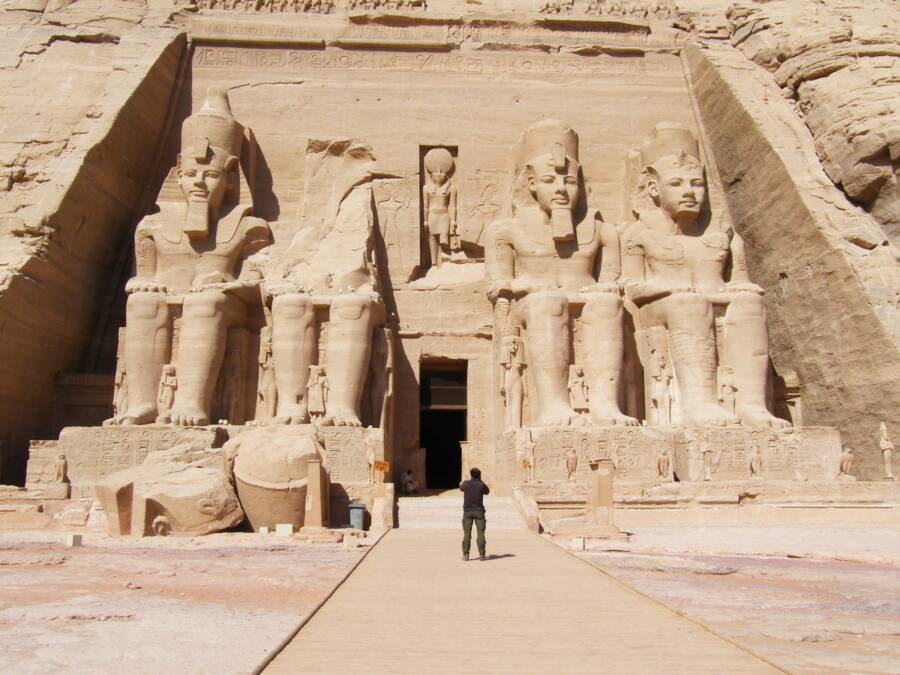The lower half of this Ramses II statue was discovered by German archaeologists in 1930.

Egyptian Ministry of Tourism and AntiquitiesThe missing upper portion of a statue dedicated to Ramses II.
Nearly a century ago, the bottom half of a limestone statue of King Ramses II was unearthed in Egypt. Now, archaeologists have unearthed the missing upper half in Egypt’s Minya Governorate, finally restoring this ancient statue to its former glory.
Per a translated statement from the Egyptian Ministry of Tourism and Antiquities, the excavation was a joint archaeological mission between the Supreme Council of Antiquities and the University of Colorado.
The previously missing portion of the statue depicts Ramses II’s head, shoulders, and upper torso. He is shown wearing a double crown known as a pschent, signifying the ancient pharaoh’s dominion over Egypt, as well as a uraeus, a cobra headdress that represents the goddess Wadjet.
The Symbolism Of This Ramses II Statue
Wadjet, known to the ancient Greeks as Uto or Buto, was an ancient Egyptian goddess and considered one of the oldest deities in the Egyptian pantheon. Her name means “green one,” which reflects her association with serpents, the Nile Delta, and fertility and life.

Wikimedia CommonsAn illustration of Wadjet based on ancient symbols found in the pyramids.
Wadjet was often depicted as a cobra or as a woman with the head of a cobra, symbolizing her role as a protector and guardian.
Wadjet held significant religious importance in ancient Egypt. She was the patron and protector of Lower Egypt, where she was worshipped in the city of Buto, her cult center. Her counterpart was Nekhbet, the vulture goddess, who protected Upper Egypt.
Together, Wadjet and Nekhbet were known as the “Two Ladies,” representing the unification of Egypt under a single monarchy. They were often shown together on the pharaoh’s crown, or pschent, symbolizing the pharaoh’s authority over both Upper and Lower Egypt.
The uraeus, commonly hammered from gold, was likewise an emblem of supreme power. In ancient depictions, pharaohs were portrayed wearing the uraeus to signify their authority.
The recently unearthed portion of the statue itself stands over 12 feet tall. When put back together with its lower half — which was discovered in the same area in 1930 by German archaeologists — it is expected to be roughly 23 feet tall.
While this discovery concludes a nearly century-long search to complete the Ramses II statue, it is far from the only structure to depict this legendary pharaoh.
Other Dedications To King Ramses II
King Ramses II, also known as Ramesses the Great, was one of ancient Egypt‘s most celebrated and powerful pharaohs. He ruled Egypt for approximately 66 years, from 1279 to 1213 B.C.E., during the 19th Dynasty of the New Kingdom — the peak of Egypt’s power and glory.
Ramses II is often considered one of the greatest pharaohs due to his many successful military campaigns and architectural achievements. As such, Ramses II was highly regarded among his people, and numerous dedications to him were crafted at sites across the country.
For example, in the province of Aswan are the twin temples of Abu Simbel, where four 65-foot-tall statues of Ramses II stand at the entrance to the Great Temple.

Wikimedia CommonsThe facade of the Great Temple at Abu Simbel, with Ramses II statues lining it.
An excavation in 2019 also unearthed a rare statue of Ramses II near the Giza pyramids, and in 2017, archaeologists unearthed a colossal statue of the pharaoh beneath a Cairo slum.
In all, researchers have discovered more than 350 massive statues dedicated to Ramses II.
With both halves of this statue now reunited, the Ministry of Tourism and Antiquities has announced that efforts are underway to clean and reconstruct the massive limestone statue.
After reading about the discovery of this missing Ramses II statue, learn more about ancient Egypt and how the pyramids were built. Or, learn about the khopesh, the ancient sword that helped forge the Egyptian empire.





